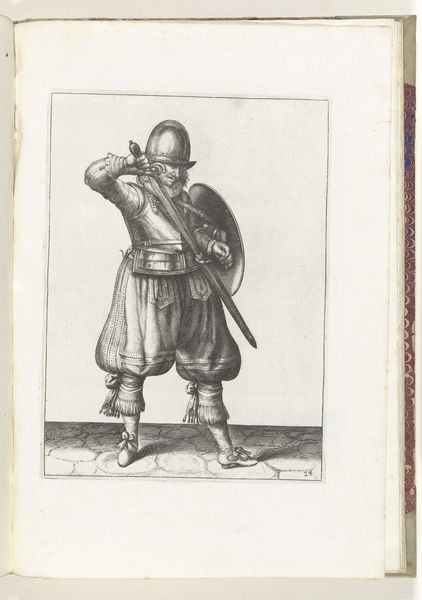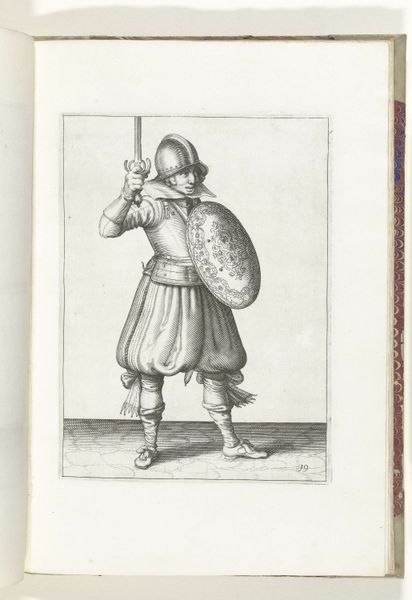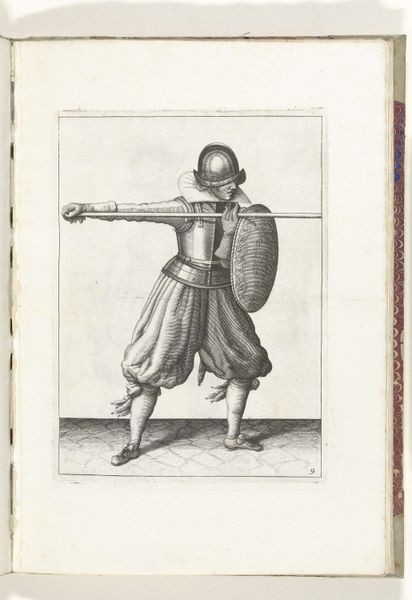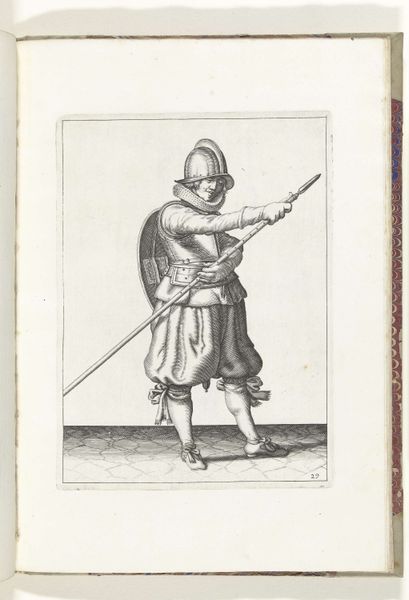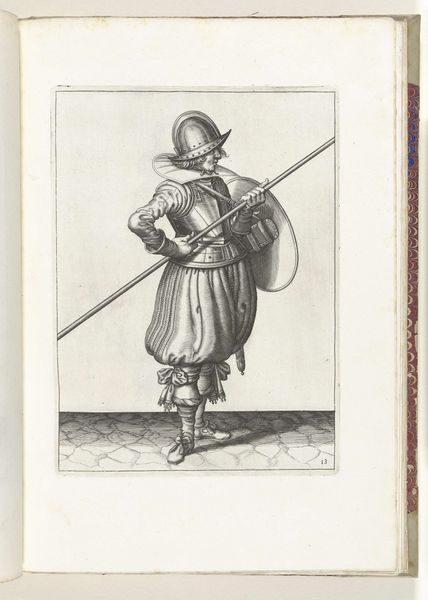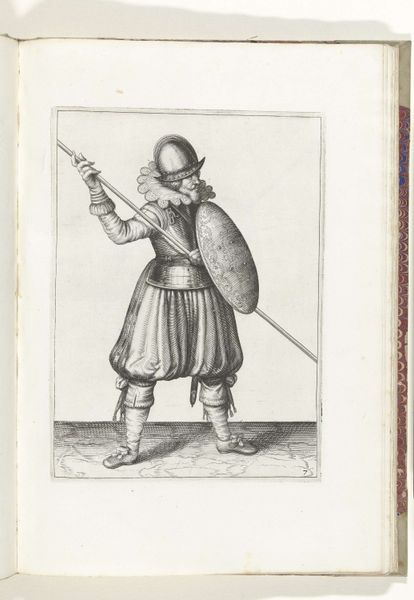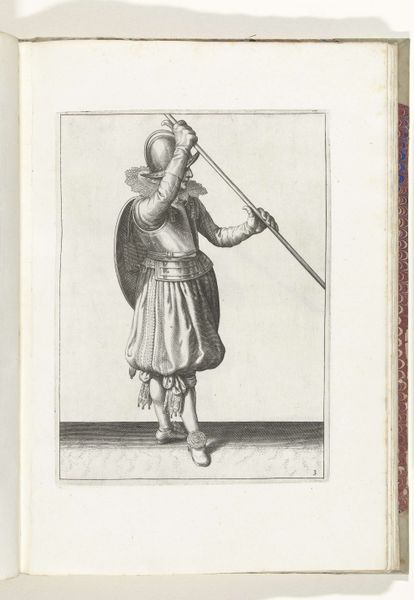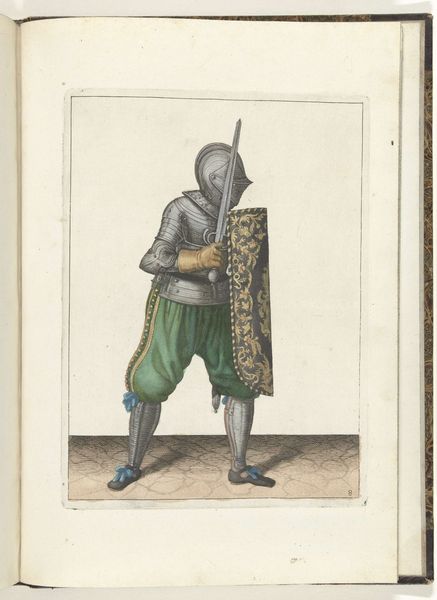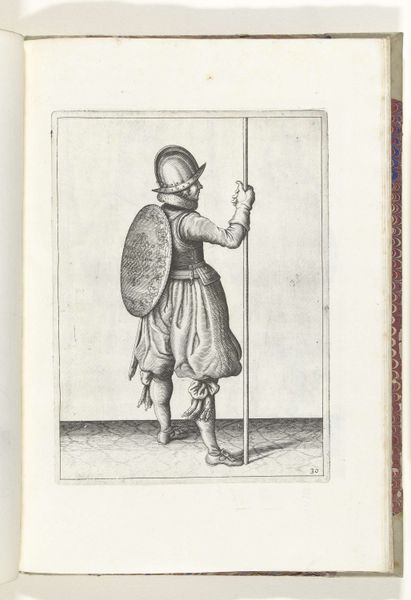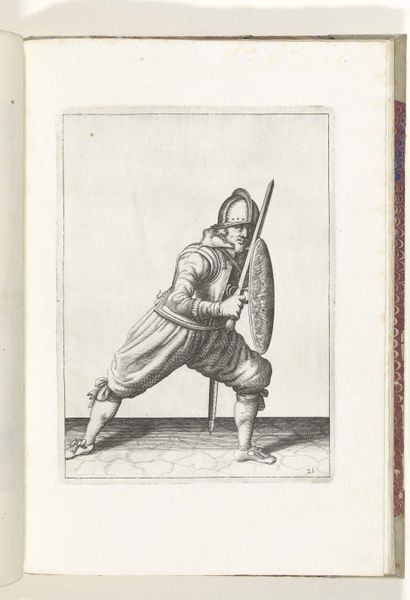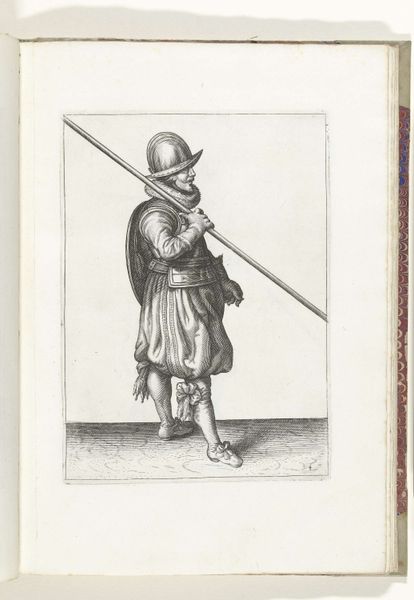
De exercitie met de targe en rapier: hoe de soldaat zich moet verdedigen met de targe rustend tegen de linkerknie en linkerschouder, de getrokken rapier in de hand (nr. 8), 1618 1616 - 1618
0:00
0:00
print, engraving
#
weapon
#
baroque
# print
#
figuration
#
history-painting
#
engraving
Dimensions: height 255 mm, width 187 mm
Copyright: Rijks Museum: Open Domain
Editor: This engraving, titled "De exercitie met de targe en rapier..." was created by Adam van Breen between 1616 and 1618. The figure looks quite self-contained. I'm interested in how such rigid composure might reflect a strategic advantage. What compositional elements strike you most? Curator: The linear precision is noteworthy. The tight, controlled hatching describes not just form, but also texture: the gleam of polished steel, the softer folds of the breeches. Notice how the composition leads the eye. The rapier, visually aligned with the helmet's apex, directs our gaze, doesn't it? What effect does that produce, do you think? Editor: It creates a vertical thrust, but the figure's posture, especially the knee resting against the targe, seems to ground him. Curator: Precisely. Observe how van Breen manipulates the visual tension between the implied upward movement of the rapier and the stabilizing, near-symmetrical base. Do you see that contrast, also, within the surface articulation of the shield versus the weapon? The contrast suggests containment and violent force are mediated. Editor: I do, and it appears that those tensions produce the image's overall sense of restrained readiness. It's fascinating how formal analysis can unlock that kind of narrative. Curator: Indeed. Analyzing such details gives us access to the strategies—artistic, rhetorical, or combative—that would have been esteemed by contemporary viewers. It highlights how artistic choices can reflect not just aesthetic preferences, but strategic and conceptual underpinnings.
Comments
No comments
Be the first to comment and join the conversation on the ultimate creative platform.
